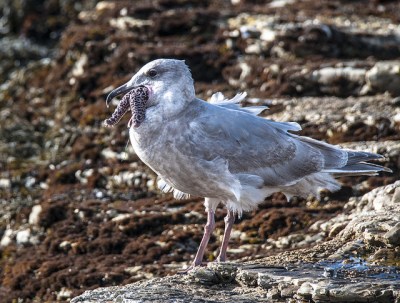Killer whale strandings are rare and tragic events, which is why it’s so important that scientists respond quickly and appropriately to collect as much data as possible.
According to Dr. Joe Gaydos, Wildlife Veterinarian and Chief Scientists of UC Davis’s SeaDoc Society, “Every killer whale stranding represents an opportunity for researchers to learn more about the species. It’s important that we have a system to capture as much information as possible in each event.”
A team of researchers from the UC Davis School of Veterinary Medicine, the University of British Columbia (UBC) and SeaWorld came together this year to do just that. The team has created the new Killer Whale Necropsy and Disease Testing Protocol, which is an updated version of a document that was originally written back in 2004.
That original protocol greatly enhanced killer whale examinations in the Northeast Pacific Ocean, but plenty of advances have been made in the ensuing decade. The new protocol captures that new knowledge in an effort heighten awareness of health concerns and increase the number of complete postmortem standardized necropsies.
Since the original protocol, scientists have performed necropsies on one out of every three killer whales that strand in the North Pacific – a remarkable 1,600 percent increase in effort. The data collected – on causes of death, contaminants, and genetics – are already being used to help recover endangered killer whale populations.
Dr. Steve Raverty, a UBC faculty member at the UBC Marine Mammal Research Unit, points out that “Revision of the necropsy protocols is the first of a multiphase approach to further understand health and disease in these majestic animals, icons of the Pacific Northwest.”
The new protocol will be critical in helping understand how disease might impact the recovery of small declining killer whale populations, such as the southern resident killer whales.
In the new protocol, sample collection is standardized and guidelines are provided to help identify research personnel that can assist in a given stranding incident. It also helps assess the impact of sound on killer whale ear anatomy. Dr. Raverty said, “Thanks to research over the last decade, we now have a better understanding of how sound can damage whale ear structure and this data has informed the protocol. When we examine a dead whale, we now have better tools to determine if it got stranded because of a blast or other sonar incident.”
According to Judy St. Leger "The loss of any of these animals is always a sad event. However, data from systematic evaluations provides a window into the world of killer whales. We can compare results and identify ways to positively impact populations."
While the testing is focused on North American resources, the sampling protocol is universal and this protocol can be implemented globally. It can be accessed for free using the button below.




